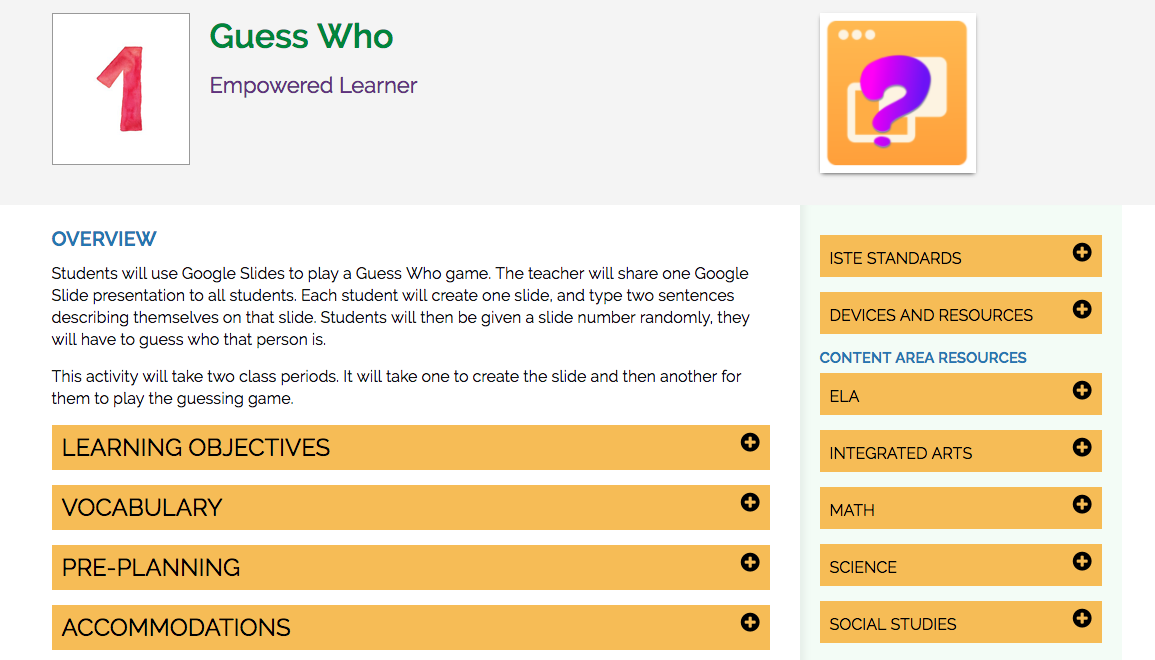Getting Started

The 21 Things 4 Students website was created in 2010 to fulfill a need to ensure middle school students were technologically literate by the time they began high school. The 21 Things 4 Students (21t4s) is a complete curriculum to teach all the skills necessary at the middle school level. Teachers began requesting a similar website for elementary students so that their students could also learn the technical skills necessary for their grade level.
After several iterations during the planning stage, it was decided that a website for elementary students would be difficult to create especially at the lower levels as the students would have difficulty reading and following the steps necessary to complete the tasks as they do on the 21t4s website.
There have been many scope and sequences created since the early 1990s to determine what skills should be taught at each level. A hole exists for FREE lessons created by experts to go along with the district scope and sequence.
Therefore, it was decided that task cards would be created where teachers teach a technology embedded activity in 5-15 minutes and then the students have 15-30 minutes to complete the activity. The activities could be extended for multiple class periods if necessary. Each task card would have tutorials to assist the teacher if they didn't have knowledge of the program or app. Ultimately a teacher would have a 45-minute lesson with step-by-step instructions to use with students.
Thus MiTechKids was born and launched in the winter of 2018!
Teachers at the elementary level have been enlisted to create task cards with technology competency-based activities that they have used with their students in the classroom. After taking this course, you will have the ability to share an activity you have created if it is chosen to be on the MiTechKids' website.
Let's move on to learn how each activity is standards-based in Competencies and Standards.
Standards
ADDRESSING THE ISTE STANDARDS FOR EDUCATORS
Learner
1a. Set professional learning goals to explore and apply pedagogical approaches made possible by technology and reflect on their effectiveness.
1c. Stay current with research that supports improved student learning outcomes, including findings from the learning sciences.
Leader
2b. Advocate for equitable access to educational technology, digital content and learning opportunities to meet the diverse needs of all students.
2c. Model for colleagues the identification, exploration, evaluation, curation and adoption of new digital resources and tools for learning.
